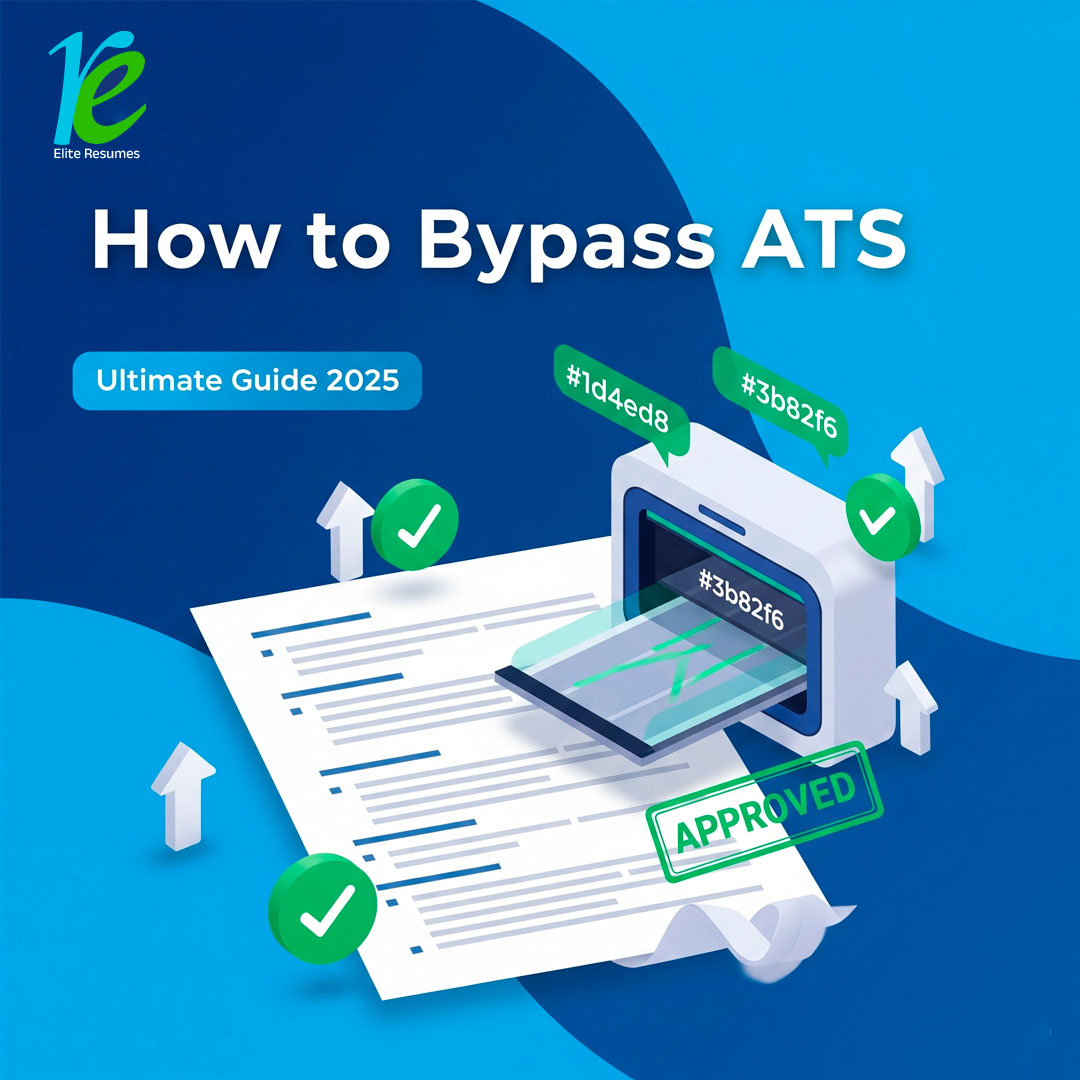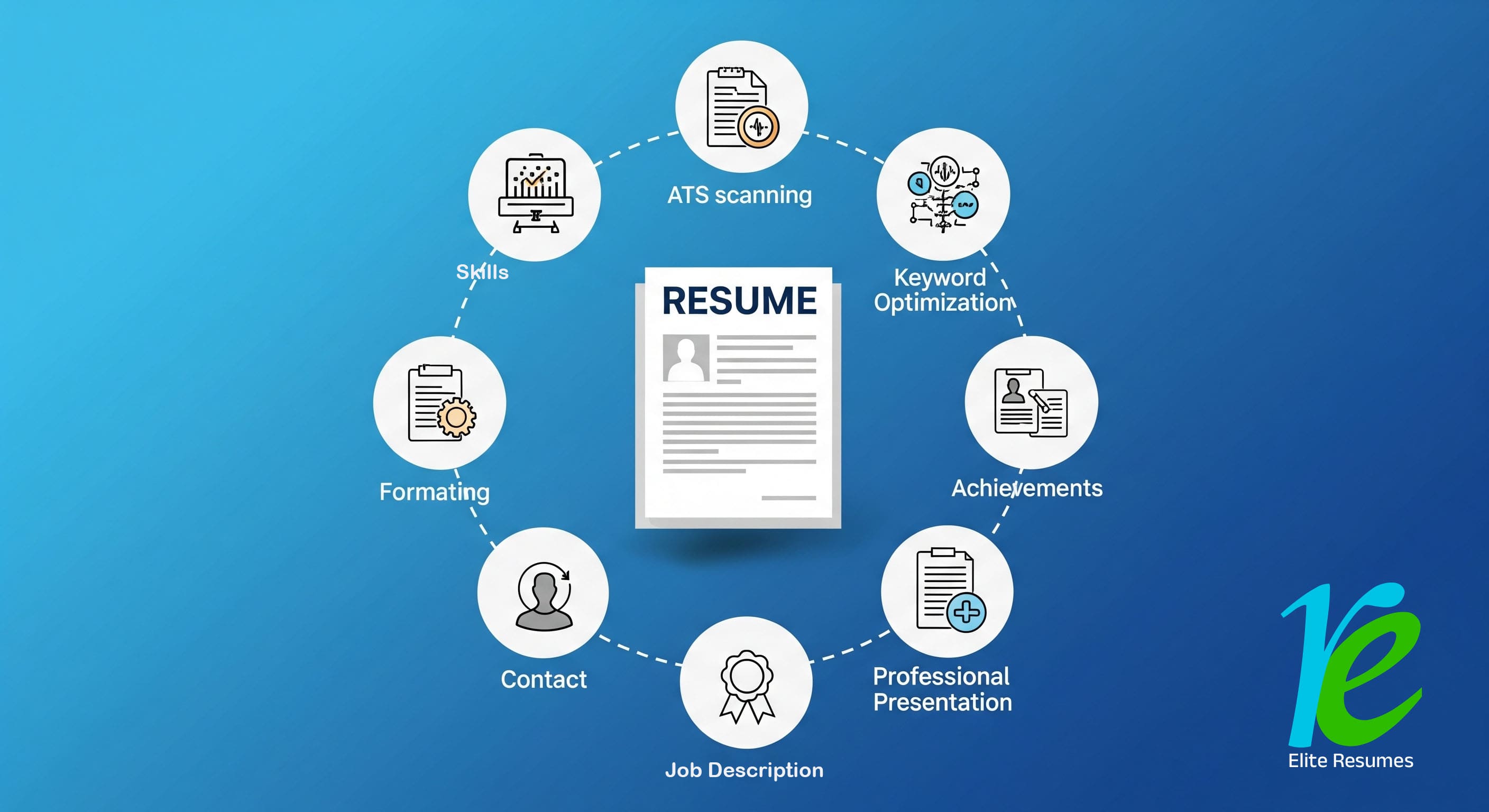How to Create an Experienced IT Professional Resume That Actually Gets You Hired

If you've been working in IT for a few years, you already know the struggle. The job market is tough, and your resume needs to stand out. But here's the thing - most experienced IT professionals make the same mistakes when creating their resumes.
You might have amazing skills and years of experience, but if your resume doesn't show it the right way, it won't even reach a human recruiter. Want to know why? Most companies use software called ATS (Applicant Tracking Systems) to filter resumes first.
Why Your IT Resume Might Be Getting Rejected
Before we talk about how to create the perfect resume, let's understand why resumes get rejected. There are several common reasons, and honestly, most of them are easy to fix once you know what they are.
The biggest problem? Your resume probably isn't getting past the ATS.
These systems scan your resume for specific keywords and formatting. If you don't match what they're looking for, you're out. No human will even see your application.
Check out these common reasons why resumes get rejected so you can avoid making the same mistakes.

What Makes an Experienced IT Professional Resume Different
When you're experienced, you can't just list everything you've ever done. That's what freshers do. Your resume needs to show growth, leadership, and real impact.
Think about it - you're not competing with fresh graduates anymore. You're competing with other experienced professionals. The hiring manager wants to see:
- How you solved complex technical problems
- Projects you led or contributed to significantly
- Technologies you mastered over time
- How your work helped the business (not just what you did)
If you're coming from a technical background like engineering, you might want to look at how to structure technical achievements properly. Many professionals find it helpful to see examples from similar fields, like this mechanical engineer fresher resume template to understand how technical skills should be presented.
Getting Past the ATS: Your First Challenge
Look, I'll be straight with you. If your experienced IT professional resume can't get past the ATS, nothing else matters. It doesn't matter how good your experience is or how well you write.
Here's what you need to do:
Use the right keywords from the job description. Don't just copy-paste them, but use them naturally throughout your resume. If they're looking for "cloud architecture," make sure that exact phrase appears in your resume.
Format your resume simply. No fancy designs, no tables, no text boxes. Just clean, simple formatting that ATS can read. Need help with this? Learn how to bypass ATS with the right approach.
Save your resume as a .docx or PDF file. Most ATS systems handle these formats well.
Use an ATS-friendly template. This makes a huge difference. Find ATS-friendly CV templates that are designed specifically to get past these systems.
How to Structure Your Experienced IT Professional Resume
Let's talk about the actual structure. This is where many people mess up.
Contact Information
Put your name, phone number, email, and LinkedIn profile at the top. That's it. Don't add your full address - city and state are enough. No one needs your complete street address anymore.
Professional Summary
This is your elevator pitch. In 3-4 lines, tell them who you are, what you're good at, and what you're looking for. Make it specific to the job you're applying for.
For example: "Senior IT professional with 7+ years of experience in cloud infrastructure and DevOps. Specialized in AWS architecture, reducing deployment time by 60% through automation. Seeking to leverage expertise in enterprise-level cloud solutions."
See how specific that is? That's what you need.
Technical Skills
List your skills, but organize them smartly. Group them by category:
- Programming Languages
- Cloud Platforms
- Databases
- DevOps Tools
- Operating Systems
Don't just dump everything in a random list. Make it easy for recruiters to scan.
Professional Experience
This is the meat of your resume. For each job, include:
- Company name and your job title
- Dates you worked there
- 4-6 bullet points describing what you did
But here's the trick - don't just say what you did. Show the impact.
Instead of "Managed cloud infrastructure," write "Managed AWS infrastructure for 50+ applications, reducing costs by 30% through optimization."
See the difference? Numbers and results make your experience real.
Education and Certifications
Put this near the end. If you have relevant certifications like AWS Certified Solutions Architect or CCNA, definitely include them. They matter a lot in IT.
Common Mistakes Experienced IT Professionals Make
I see these mistakes all the time:
Including every single technology you've ever touched. Don't do this. Focus on what's relevant to the job you want. If you used a technology once five years ago, leave it out.
Writing your resume like a job description. Your resume should show achievements, not just responsibilities.
Anyone can list what they were supposed to do. Show what you actually accomplished.
Using too much technical jargon. Yes, you need technical terms, but make sure a recruiter can understand the impact of your work. Not every recruiter knows what Kubernetes is, but they'll understand "reduced deployment time from 2 hours to 15 minutes."
Making it too long. Two pages maximum. If you can't fit your experience in two pages, you're including too much detail.
Not customizing for each job. I know it takes time, but you need to adjust your resume for each application. At least update your professional summary and make sure the keywords match.
Essential Resume Tips for 2025
The job market keeps changing, and so do resume standards. Here are some essential resume tips for 2025 that you should know about.
Remote work experience matters now more than ever. If you've managed remote teams or worked on distributed systems, highlight it. Companies want to know you can handle remote work.
Show your soft skills through examples. Don't just say you're a "team player" or have "excellent communication skills."
Show it through your achievements: "Led a cross-functional team of 8 developers and designers to deliver project 2 weeks ahead of schedule."
Include links to your work. If you have a GitHub profile with impressive projects, add it. If you wrote technical articles or contributed to open source, mention it. This stuff matters.
Making Sure Your Resume Is ATS-Ready
Before you send your resume anywhere, run it through an ATS checklist. This will help you catch common formatting issues that might get your resume rejected.
Here are quick checks you can do yourself:
Can you copy-paste text from your resume easily? If not, the ATS probably can't read it either.
Does your resume use standard section headings like "Work Experience" and "Education"? Creative headings confuse ATS systems.
Are your dates formatted consistently? Use the same format throughout (like "Jan 2020 - Dec 2023").
Did you use standard fonts? Stick to Arial, Calibri, or Times New Roman.
What About Different Resume Formats?
You might have heard about different resume formats. There's chronological, functional, and combination formats.
For experienced IT professionals, chronological format works best. This means listing your jobs from most recent to oldest. Why? Companies want to see your career progression and what you've been doing recently.
Functional resumes (which focus on skills rather than job history) often raise red flags. Recruiters wonder if you're trying to hide something.
If you're looking at different format options, you might want to check out resources like this Europass CV guide to understand various international formats, though for IT jobs, the standard US format usually works best globally.
For Career Changers and Recent Graduates
If you're transitioning into IT or recently graduated, your approach will be slightly different. You might want to look at specialized templates like the BCom fresher resume template to understand how to present limited experience effectively.
But if you're truly experienced, focus on your real-world achievements rather than academic projects.
Your Action Plan: What to Do Right Now
Let's make this simple. Here's what you should do today:
First, open your current resume and read it with fresh eyes. Does it show your impact or just list your duties? If it's mostly duties, you need to rewrite those bullet points.
Second, look at job postings for roles you want. What keywords keep appearing? Make sure those keywords are in your resume.
Third, check your formatting. Is it clean and simple? Can an ATS read it? Use the resources I mentioned earlier to verify this.
Fourth, get your resume to the right length. Two pages, no more. If you have more experience than that can fit, focus on the most recent and most relevant.
Fifth, have someone else review it. Another set of eyes will catch mistakes you missed.
The Truth About Resume Services
Should you hire someone to write your resume? Honestly, it depends.
If you're really struggling to present your experience effectively, or if you're not getting any interviews, it might be worth it. Professional resume writers know what works and what doesn't.
But if you follow the advice in this post and use the resources I've linked to, you can definitely create a strong resume yourself.
Final Thoughts
Creating an experienced IT professional resume that gets results isn't rocket science, but it does take effort. You can't just update the dates on your old resume and expect different results.
Take the time to do this right. Show your real impact, use the right keywords, format it properly for ATS, and customize it for each job.
Remember, your resume is your marketing document. It's not a complete history of everything you've ever done. It's a targeted message that says "I'm the right person for this job, and here's the proof."
Start with the tips I've shared here, use the resources available at our resume tips section, and you'll have a resume that actually gets you interviews.
Your next great opportunity is waiting. Make sure your resume doesn't hold you back from getting it.
Need More Help?
If you want more detailed guidance on specific aspects of resume writing, check out our complete collection of resume tips where we cover everything from formatting to industry-specific advice.
Let Our Expert Resume Writers Help You
Don't want to do it yourself? At Elite Resumes, we're professional resume writers who specialize in crafting ATS-optimized resumes for IT professionals. We understand what tech recruiters are looking for and know how to showcase your experience to get you more interviews.
Our expert writers will create a powerful, professional resume that highlights your technical skills and achievements - tailored specifically for your target role.
Get Your Professional Resume →Good luck with your job search. You've got this!


